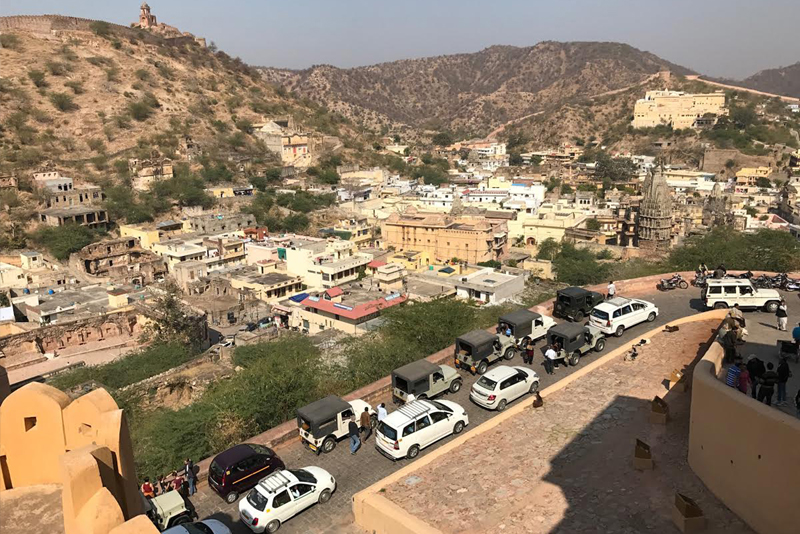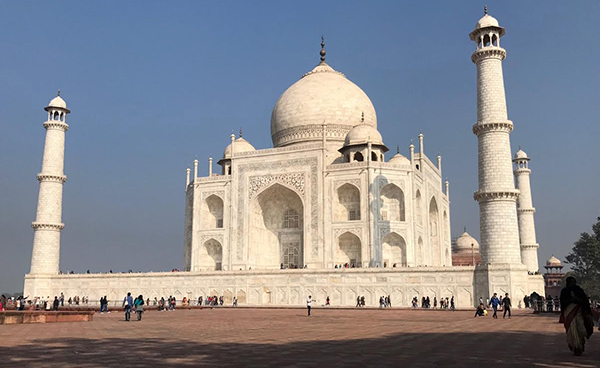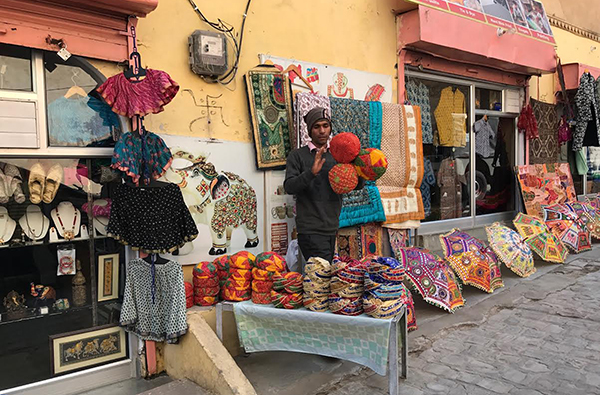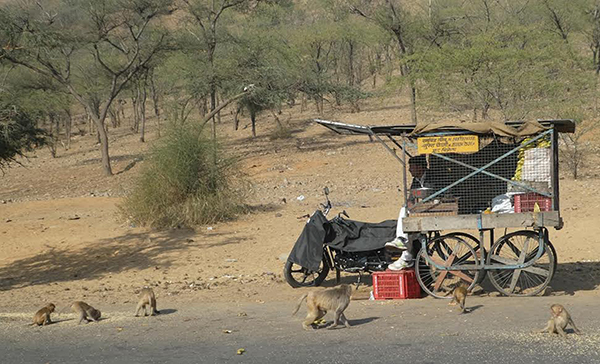On the road to Agra and Jaipur

The Amer Fort and the Great Wall. Photos by Chit U. Juan
With two days between events in New Delhi and Guwahati, our group decided to take a road trip along what is known as the Golden Triangle – Delhi to Agra to Jaipur and back to Delhi.
MANILA, Philippines — As the India-ASEAN summit was also happening on the same days we were there, we avoided traffic and took off with our driver Raj Kumar and drove off southward to Agra to visit the famous monument – an ode to love – called the Taj Mahal.
We were met by our very excited guide named Ishi and wore our shoe covers to walk the famous marble structure decorated with precious stones inlaid in white Indian marble. There is a special line for foreign tourists who do have to pay a little higher (1000 rupees, approx $15) while locals pay just a dollar or 60 rupees entrance fee. Families and hordes of domestic local tourists line up for two hours to get frisked and finally be allowed to enter the mausoleum.
Foreigners get whisked through a special lane and the whole process (with a tour guide getting the tickets and weaving through crowds) just takes a little over half an hour.
The building is really majestic and worth a visit at least once in one’s lifetime. After all, it took 22 years and thousands of workers to complete the iconic structure. The inner court is a dark hall of stone inlays, precious gems embedded and laid out in floral and intricate designs on the walls and ceilings.

The majestic Taj Mahal is a temple to love.
There are symmetrical mosques flanking the big structure and on Fridays the whole place is closed to the public in observance of the Moslem ceremonies held on this day. So we were lucky to visit on a Thursday despite the huge crowds one must expect on any day.
“About 15,000 to 20,000 visitors come each day,” said Ishi, who has been a guide here for the last 32 years (he is now 57) and has visited the Taj 9,800 times!
“Licensed” photographers take souvenir shots of tourists and each guide has a deal to let the photographers follow you to a series of “touristy” poses. Smooth operators – these tour guides even have a deal in the dark hall to have someone hold a flashlight to show you the translucence of the marble and to light up each gemstone in the inlay to oohs and ahhs of the crowd.
That’s a 200-rupee tip earned by the “flashlight” man.
These guides are enterprising and they already know the drill of who to tip and who to hire for other services needed.
I actually had to hire a wheelchair and a pusher boy as I injured my foot the day before. Ishi slipped a 500-rupee note to my pusher boy and then turned around and charged me 2000 rupees ($30).
I just smiled as I pay him because I could not have racked up 5,000 steps up and down the stairs without Ishi taking my hand and me holding his arm as we went through staircases my wheelchair could not manage. He deserved all the profit and tips he made that day.
After an early dinner in Agra we drove on to Jaipur, a 5-hour journey into the night, this time westward. As I charted our drive on Google maps we passed tollway after tollway and looked for a stop to stretch and get some potato chips and for Raj to have a cup of Chai Masala. Driving 500 kilometers in one day is a feat for this gentle Delhi man.
In Jaipur we met our next tour guide, Warun or “Varun” as he says it with an accent. Though we had a long list of places to go, Varun decided we see Amer Fort as it is a bit of a drive through Jaipur’s traffic - something that would put Manila or Jakarta traffic to shame.

Colorful souvenirs for sale at Amer Fort.
Jaipur traffic is epic. Sights and sounds of electric and motor rickshaws, jeeps, buses and just crazy traffic you cannot imagine. Until you take a rickshaw – all five of us with the driver in our most vulnerable open side, two inches away from the next motorbike, we had to keep arms and legs within the rickshaw’s 30-inch width to avoid getting sideswiped by anything and everything.
At Amer Fort, we climbed the steady path in our car and soon got off and took the long and winding walk up to the palace. This guide with five years’ experience knew the history of the moguls and the maharajahs enough to entertain us for a good two hours.
The palace has a 400-year history of amazing engineering, as it served the king’s family well during both summer and winter months. Details, for example, of how they did the air conditioning during those ancient times is amazing. The use of cool water and curtains as an air conditioning system is a forerunner of today’s cooling systems.
The fort is fenced by what looked like the Great Wall of China – except this is in Rajasthan state in India. Amazing engineering marvels like these protected the rulers of yore from invaders.
What we realized after the Amer Fort visit is that one day is not enough to see and appreciate the Pink City of Jaipur. We still had a long list of places and museums but time was not on our side. With just a few hours of daylight remaining we decided it was time to hit the markets.
Rather than the fixed air conditioned textile emporium Varun took us to, we opted to leave our car, take a rickshaw and braced for the route to Hawa Mahal market or Tripolia Bazaar.
Slippers, kurtis, textile, leather – name it and it’s here. One shop after another, we walked to discover most shopkeepers were male – and they were aplenty. Men selling us embroidery and textiles just made me think – where are the women?
The merchandise can leave you breathless – beautiful wood block prints, fine cotton tablecloths, sandals and bags. All you need is extra luggage as the goods are too good to pass up – blouses made of fine cotton, beautiful leather and saris and kurtis in typical bright Indian colors. But please haggle. I think it is an exercise both seller and buyer know they have to engage in before a deal is done.
Haggling here is not for newbies. This is Haggling 505 if there is such a course. To begin with, many items have no price tags and shopkeepers will first size you up before quoting a price.
That’s why I appreciated a shop called Gulab Chand which had prices stuck to the blouses so one had a starting point before the haggle.
Oh, it could be exhausting for the beginner. The inexperienced will be better off shopping at the airport.
But Jaipur is an experience to test one’s patience and magnanimity. I know I can come back to again enjoy its cuisine and the shopping even if it’s a challenge to traverse its streets and to endure the traffic.

Tourists can buy bananas from this stand to feed the monkeys.
After two nights at the Lalit in Jaipur we start early for our 287-kilometer drive back to Delhi.
And what a nice day trip it was. We saw camels, elephants and cows on the highway. We saw monkeys and makeshift stands selling bananas so tourists can feed the monkeys around him.
And we saw markets in each town with its Saturday set ups of fruits and vegetables and lots of people.
Onwards to Delhi, we were looking forward to ending our road trip with a little more shopping at the famous Khan Market.
Three days on the road and we’ve seen a lot of India that guide books will probably never be able to describe. And this is just one part of the subcontinent. We have just covered two states – Uttar Pradesh and Rajasthan. They have 27 states in all.
My next journey will take me north eastward to Guwahati in Assam State. Meanwhile, let me have some paneer, some dal baluchi and garlic naan. And some Chai Masala to refresh myself before the next part of our Indian journey.



















